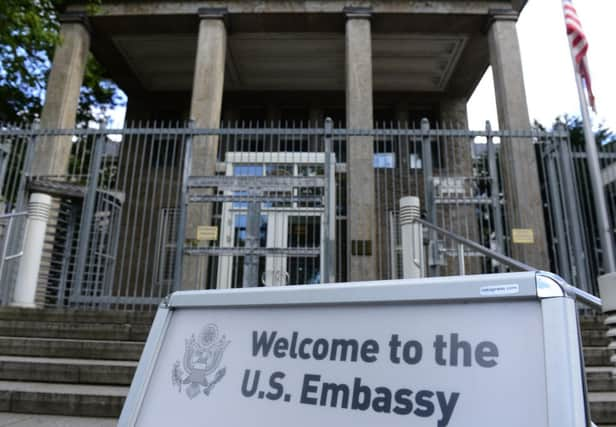Senate report claims CIA lied about use of torture methods


A damning Senate report said the intelligence agency engaged in “non-stop” brutality, which caused one man to freeze to death after being chained to the floor semi-naked.
The sweeping indictment also revealed the CIA lied about the extent of its torture programme and exaggerated the usefulness of intelligence it gleaned. Agents did not fully brief President George W Bush until five years after the 9/11 attacks, by which time the abuse was endemic.
Advertisement
Hide AdAdvertisement
Hide AdSpeaking on Capitol Hill as she released the report, the Senate Intelligence Committee chairwoman Dianne Feinstein called the findings a “stain on our values, and on our history”.
The committee started its investigation in 2009 and finished in 2012 but has been delayed due to lobbying from the CIA about what should be made public. The document released yesterday was a 500-word summary – the full version runs to 6,700 pages. It charts the CIA’s “Rendition, Detention and Interrogation” programme, which Mr Bush authorised after 9/11 and was banned by President Barack Obama in 2009.
The report looked at 20 intelligence “successes” the CIA claimed and found no actionable intelligence that was not otherwise obtained was gleaned from detainees, and no imminent threats were thwarted.
The CIA mounted a concerted attempt to hide their actions and, when asked by the White House, “repeatedly provided incomplete and inaccurate information”, the report says.
The abuse at the “Black Sites” where detainees were held included prisoners with broken legs and feet being forced to stand. At least five detainees were subjected to “rectal feeding” which the report says was conducted “without documented medical necessity”.
The CIA has only admitted waterboarding three people but the technique appears to have been far more widely used. The report describes a photograph of a “well-worn” waterboard at a location where the practice was not previously revealed.
Al-Qaeda mastermind Khalid Sheikh Mohammed was waterboarded at least 183 times, which the report calls a “series of near drownings”.
In 2005, the CIA told the Department of Justice that there were 94 detainees and 28 had been tortured. The report, however, said that of the 119 detainees at least 39 were tortured and at least 26 were wrongfully held.
Advertisement
Hide AdAdvertisement
Hide AdSpeaking after Senator Feinstein, Senator John McCain, who was tortured in the Vietnam War, said: “I know from personal experience that the abuse of prisoners will produce more bad than good intelligence.”
Contrary to claims by Mr Bush, detainees did not help thwart a plot to bomb Heathrow airport in 2003, as the information had been obtained beforehand. The UK’s lobbying for information about UK involvement to be kept out of the report appears to have paid off, as there is no mention of Diego Garcia, the British-owned island in the Indian Ocean said to have been used as a “Black Site”.
In a statement, Mr Obama said: “It reinforces my long-held view that these harsh methods were not only inconsistent with our values as a nation; they did not serve our broader counter-terrorism efforts or our national security interests.”
CIA director John Brennan disagreed with the findings of the report. He said: “Our review indicates that interrogations of detainees on whom [torture methods] were used did produce intelligence that helped thwart attack plans, capture terrorists, and save lives.
“The intelligence gained from the programme was critical to our understanding of al-Qaeda and continues to inform counter-terrorism efforts to this day.”